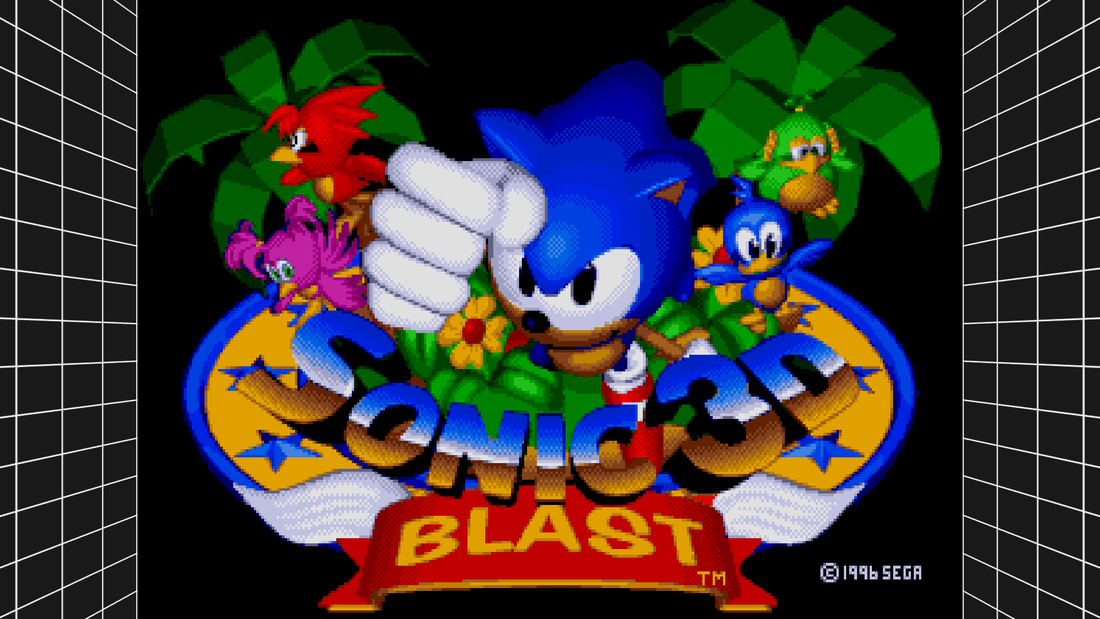|
In 1991, the release of Sonic the Hedghog was a watershed moment for Sega's flagship console of the time, the Megadrive (or Genesis, as it is known in North America). The lightning-fast platformer cemented the success of the console, and launched a huge series which continues to this day. By 1996, however, the Megadrive was reaching the end of its lifespan and there was time for just one more Sonic game on the platform before the series moved fully onto its successor, the Sega Saturn.
That game was Sonic 3D Blast, which had versions released for both the Megadrive and the Saturn. The game was actually developed primarily in the UK, by British developer Traveler's Tales, who were given the task by Sega in the days before they were consigned to a hell of their own, developing only countless Lego games. Over the years, 3D Blast has been one of the more divisive games of the series for its unusual isometric perspective and for gameplay which is much slower than the other Sonic games of its era. These aspects have long provoked a mixed reception, but there's a case to be made that Sonic 3D Blast is if not the best Sonic game on the Megadrive, then at least the most playable.
The feature which had made the original Sonic the Hedghog so notable back in 1991 was its sheer speed. Sonic was the fastest-moving platforming character ever seen, and the programmers at Team Sonic ensured that the Megadrive was able to keep up with him. This feature has always clashed with other aspects of the Sonic experience, however - the early games are rife with instant deathtraps and other hazards, which are difficult to avoid at such high speeds without a deep knowledge of the stages.
Sonic 3D Blast's isometric perspective required a toning down of the blue hedgehog's famous velocity, and a shift to a gameplay style more based around exploration. This not only makes the game much less frustrating, but also a more relaxed experience - no longer do levels fly by in a blur, as they did in, say, Sonic the Hedghog 2. Other recurring elements are ditched, not least the absolutely infuriating underwater levels that plagued the other Sonic titles on the Megadrive.
Otherwise, all the classic elements of the Sonic series are present and correct in 3D Blast - rings, badniks, loops, powerups, even the familiar sound effects. There are special stages, too, and happily these aren't as crushingly difficult as in the other games. The lovingly crafted isometric levels have a special charm all of their own, especially taking into account the excellent music. The themes for the snowy Diamond Dust Zone are particularly lovely.
In Europe, Sonic 3D had the subtitle Flickies' Island in reference to a core gameplay element specific to the game. In each section of each level, Sonic must rescue five "flickies", small magic birds trapped in badniks by Dr. Robotnik. These were lifted from the 1984 Sega game Flicky, and add a unique feel to the game. True, they can be frustrating when damage causes them to scatter from Sonic's side, but they are also charming in their own way and each colour of flicky behaves differently, which is a nice touch. While playing in a port that provides judicious use of saving is still advised due particularly to the boss battles - for example the Sega Megadrive Classics collection available on Steam - Sonic 3D Blast is a refreshingly relaxed entry in the series. This is a somewhat forgotten Sonic game, but one which has very real charms of its own and is certainly worth your time.
0 Comments
Your comment will be posted after it is approved.
Leave a Reply. |
About
Exploring classic science fiction, with a focus on the 1950s to the 1990s. Also contributing to Entertainium, where I regularly review new games. Categories
All
|





